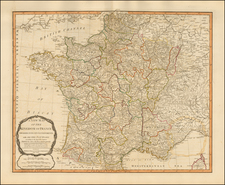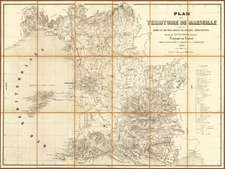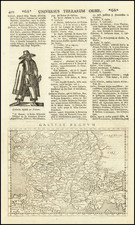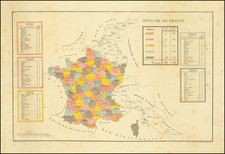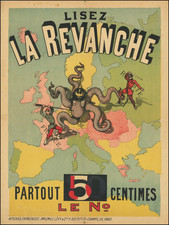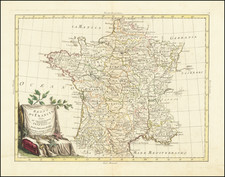The Lizars map of France illustrates the country shorly after the adoption of the Department system. This map is distinguished by its thorough illustration of France's provincial landscape..
The map shows the the administrative divisions of France following abandoment of the Provincial system during the French Revolution in 1790. The motivation was to move away from the monarchy and an embrace a more centralized system of governance. In lieu of provinces, the nation was divided into departments.
France's transition from provinces to departments took place during the French Revolution, more specifically, in the year 1790. This was part of the revolutionary government's efforts to dismantle the Old Regime's structures and create a more unified and egalitarian nation. Before the Revolution, France was divided into provinces, which were the historical territorial divisions under the monarchy. The provinces were created over centuries through a combination of conquests, treaties, and inheritances. Each province had its own unique customs, laws, and administrative structures, resulting in a nation that was highly decentralized and diverse.
However, with the advent of the French Revolution in 1789, the leaders sought to break away from the monarchy and the inequalities it fostered. The provincial system, with its diverse laws and practices, was seen as a remnant of the feudal past that needed to be abolished to establish equality and unity.
In 1790, the National Constituent Assembly, the revolutionary government, enacted a sweeping reform, replacing the provinces with departments. The country was divided into approximately 83 departments, each named after geographical features, primarily rivers, to avoid favoring any historic region or city. Unlike the provinces, departments had standardized laws, uniform taxes, and were directly administered by the central government in Paris.
This transition aimed to reduce regional differences, centralize power, and create a unified, indivisible French Republic. It was a significant moment in French history, marking the shift from feudalism to a more modern form of governance. However, even though the provinces were officially dissolved, they continued to hold cultural significance, and the regional identities they fostered are still evident in modern France.
The Lizars were a Scottish family of engravers and printers who produced many views and maps. Daniel Lizars Sr. (1754-1812) was the son of a shoemaker, but he apprenticed with Andrew Bell, a printer and engraver. Lizars set up his own printworks near St. Giles Cathedral and took on his own apprentices, including George Bartholomew, whose son John would go on to found the important mapmaking firm later know as John Bartholomew & Son Ltd.
Daniel Sr. had three sons: Daniel Jr., John, and William Home. He also had a daughter, Jane Home. Daniel Jr. (1793-1875), the youngest of the boys, apprenticed in his father’s shop alongside George Bartholomew. When his father died in 1812, Daniel Jr. took over much of the business, expanding it and specializing in maps. The company went bankrupt in 1832, however, and Daniel emigrated to Canada.
John Lizars (1792-1860), the middle son, studied medicine and became Professor of Surgery at the Royal College of Surgeons of Edinburgh, as well as senior surgeon at the Royal Infirmary of Edinburgh.
William Home Lizars (1788-1859), the eldest, also apprenticed in his father’s shop. After learning engraving, William entered the Trustees’ Academy to learn under John Graham. He was a skilled painter and artist. When his father died, and after his Daniel Jr. left, he carried on printing and invented a method of etching that looks like wood engraving.









